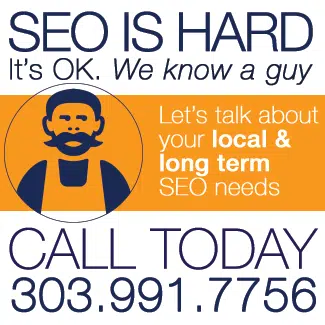Can small businesses really grow using digital marketing?
If you’re a small business owner wondering whether digital marketing actually works, you’re not alone. It’s easy to feel skeptical when you see big companies with huge budgets dominating online spaces. But here’s the truth: small businesses are seeing real, measurable growth through smart digital strategies—and the numbers back it up.
Ready to build a website that actually brings in customers? Contact The Affordable Web Guy for a free consultation about your small business website needs.
Around 58% of small businesses now rely on digital marketing to connect with their customers, and for every dollar spent on digital marketing, businesses typically earn a five-dollar return. Let’s look at some real examples of small businesses that used digital marketing to transform their operations.
How did Quench grow from 15 to 35 markets using Google Ads?
Quench, a Pennsylvania-based company founded in the mid-2000s, created an eco-friendly alternative to traditional water coolers. They started with a great product but needed a way to reach more customers beyond their local market.
In 2009, they decided to invest in Google AdWords (now Google Ads). The results were impressive. According to Google’s 2011 Economic Impact Report, Quench experienced:
- 100% revenue growth over three years
- 75% increase in their employee base
- Expansion from 15 local markets to 35 of the top 50 U.S. markets
- Two-thirds of all sales coming from the Internet
What made their approach work? They used targeted search ads to reach people actively looking for water cooler solutions, focusing on high-intent keywords that connected them with businesses ready to buy.
What happened when a century-old grocery store went digital?
Butterfield Market and Catering in New York City has been around since 1915. Despite serving notable customers like the Rockefeller family, this family-owned grocery store remained a small neighborhood business for nearly a century.
In 2008, they updated their website and started using Google AdWords. The results from the same Economic Impact Report showed that in 2010 alone, they saw 35-40% growth and expanded to support 50 full-time employees. The Butterfield name now includes a catering division and a bakery—all powered by their digital presence.
Their success came from making it easy for local customers to find them online when searching for specialty groceries and catering services in New York.
What digital strategies work best for small businesses?
Looking at these success stories and current industry data, a few key strategies consistently deliver results:
Email marketing delivers the highest ROI
Email remains one of the most cost-effective channels. According to WordStream’s 2025 digital marketing statistics, email marketing yields an average of $36 for every dollar spent. That’s an astounding 3,600% return on investment.
About 64% of small businesses use email marketing to reach customers, and it works because people check email daily—around 88% of people, according to Forbes data compiled by Constant Contact.
Search advertising captures customers when they’re ready to buy
Protocol80’s research on PPC shows that businesses make an average of $2 in income for every $1 they spend on Google Ads. More importantly, for high commercial intent searches—when someone is actively looking to buy—paid ads get 65% of all clicks.
Social media builds connections and drives discovery
Social media isn’t just for big brands. Over 51% of global consumers discovered a new brand or product on social media in the last six months, according to HubSpot’s research. For small businesses, platforms like Facebook and Instagram offer cost-effective ways to reach local audiences and build community.
Why do some businesses succeed while others struggle?
The difference usually comes down to a few critical factors:
They have a website that works. About 89% of consumers say it’s important for small businesses to have their own website, yet 36% of small businesses still don’t have one. A professional site builds credibility before someone ever calls or walks through your door.
If you’re considering a website for your business, check out our guide on the benefits of a small business website to understand how it can help you grow.
They focus on local SEO. Around 70-80% of consumers research a small business online before making contact. Having a Google Business Profile and optimizing for local search means you show up when nearby customers are looking for what you offer.
They stay consistent. The businesses that see results don’t give up after a month. They commit to showing up regularly—whether through email newsletters, social posts, or updated website content.
What should you do next?
Start small and build from there. You don’t need to be on every platform or run every type of campaign. Pick one or two channels that make sense for your business and do them well.
Consider these steps:
- Get your website in order. Make sure it loads quickly, looks professional, and clearly explains what you do. If you need help, we offer affordable websites for small business that are built with local SEO in mind.
- Claim your Google Business Profile. This free tool helps you show up in local searches and on Google Maps.
- Choose one paid channel to test. Whether it’s Google Ads or Facebook ads, start with a small budget and measure what happens.
- Build your email list. Every customer who walks through your door or buys from you online is a potential email subscriber. Stay in touch with them.
The success stories we’ve looked at—from Quench doubling their revenue to Butterfield Market growing by 40% in a single year—show what’s possible when small businesses embrace digital marketing strategically.
You don’t need a massive budget or a big team. You just need to start, stay consistent, and pay atention to what’s working. Your future customers are already online, searching for businesses like yours. Make sure they can find you.

